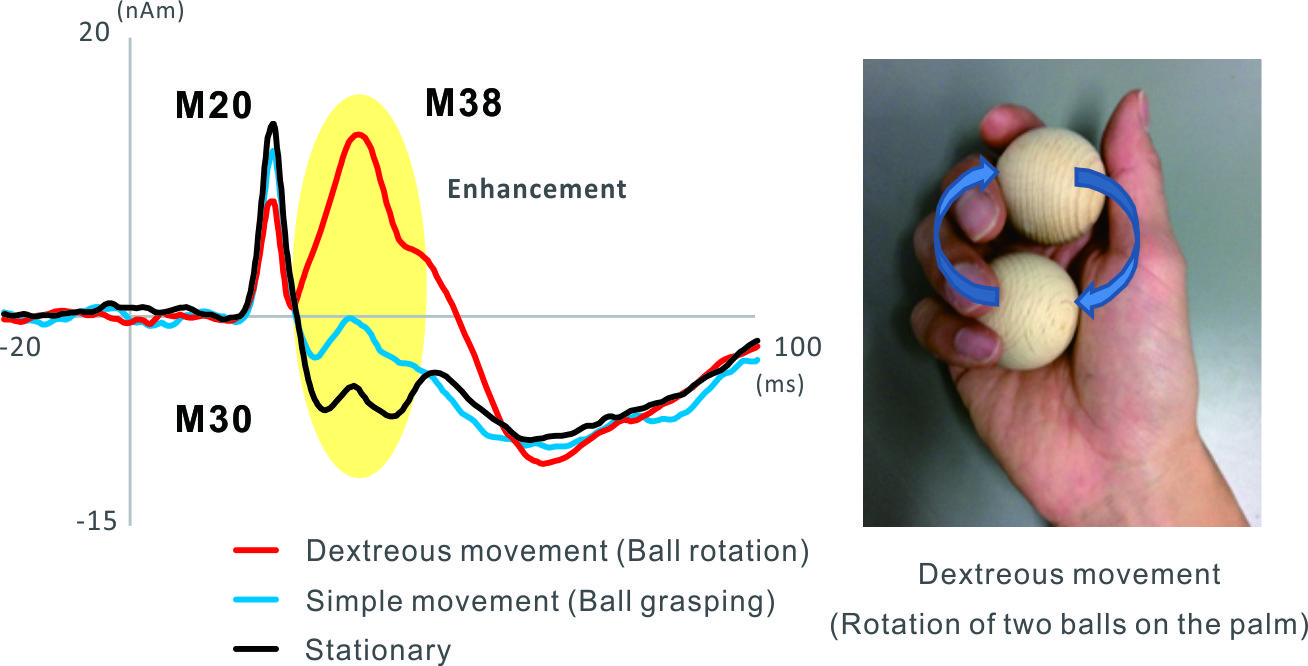Functional role of sensory information during dexterous finger movement
Fingers are the most dexterous body part in human. This ability of fingers allows us to operate objects using fingers dexterously. Manual movement in daily life requires coordinated or independent finger movement. Although the dexterous movement is made by generating the motor command based on the sensory information from moving fingers, it has not been elucidated the neural mechanism of sensorimotor integration between the information processing of sensory input and motor command in the central nervous system. This study investigated the functional role of somatosensory information during manual movement using magnetoencephalography.
The present study used the different complexity of manual motor tasks. One is the rotation of two balls in the right palm (dexterous motor task). Another is the grasping two balls with right fingers (simple motor task). While the results showed a reduction of brain activities in the simple motor task, we found an enhancement in the sensorimotor areas in the dexterous motor task. The enhancement of information processing was somewhat unexpected because modulation in the primary somatosensory area is generally found to be inhibition. We showed that the neural mechanism that adjusts the sensory input plays an important role in the control of manual movement.
Our study clarified the functional role of sensorimotor integration in somatosensory areas to execute the manual movement in humans. By clarifying the function of sensory information in motor control, it is expected that it will be useful for establishing a training method of dexterous exercise and a rehabilitation method for patients with movement disorders.

Collaborative Researcher
Department: Nagoya Institute of Technology
Institute: Department of Electrical and Mechanical Engineering
Funding
This study was supported by a Grant-in-Aid for Scientific Research (C) and the Cooperative Study Program of National Institute for Physiological Sciences.

